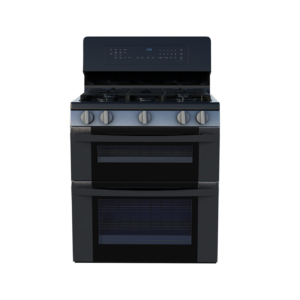A functioning dishwasher is a valuable appliance in any household, saving time and effort when it comes to cleaning dishes. However, when drainage and dispenser problems arise, it can be incredibly frustrating. These issues can lead to dirty dishes, standing water in the dishwasher, and wasted time and energy. In this article, we will explore the common drainage and dispenser problems that can occur in a dishwasher and provide solutions for fixing them.
Key Takeaways
- Common drainage and dispenser problems can cause issues with your dishwasher’s performance.
- Blockages in the drainage system can lead to slow draining and other problems.
- Slow draining dishwashers can be fixed by cleaning the drainage system and checking for blockages.
- Issues with the dishwasher dispenser can also affect its performance and require troubleshooting.
- Problems with the dispenser not opening or dispensing soap can be caused by clogs, blockages, or a stuck door.
Understanding the Common Drainage and Dispenser Problems in Your Dishwasher
When it comes to drainage problems in a dishwasher, there are a few common issues that can arise. One of the most common problems is slow draining, where water takes longer than usual to drain from the dishwasher. This can be caused by a clog in the drain hose or a blockage in the filter or pump. Another issue that can occur is a complete blockage, where water does not drain at all. This can be caused by a more severe clog or a malfunctioning pump.
In addition to drainage problems, dishwasher dispensers can also experience issues. One common problem is a dispenser door that does not open or stay closed during the wash cycle. This can prevent detergent from being dispensed properly and result in dirty dishes. Another issue is a dispenser that does not dispense soap at all, leaving dishes unwashed. These problems can be caused by clogs or blockages in the dispenser or issues with the dispenser door mechanism.
Checking for Blockages in the Dishwasher Drainage System
If you are experiencing drainage problems with your dishwasher, it is important to check for blockages in the drainage system. Start by removing the filter from the bottom of the dishwasher and cleaning it thoroughly. This will remove any debris that may be causing a blockage. Next, check the drain hose for any clogs or kinks. If you find a clog, use a long brush or wire to remove it. If the drain hose is kinked, straighten it out to allow for proper drainage.
If you have checked the filter and drain hose and still have drainage issues, it may be necessary to clean the pump. To do this, you will need to disconnect the dishwasher from the power source and remove the bottom panel. Locate the pump and check for any debris or blockages. Use a toothbrush or small brush to clean the pump and remove any obstructions. Once the pump is clean, reassemble the dishwasher and test it to see if the drainage problem has been resolved.
How to Fix Slow Draining Dishwashers
| Issue | Possible Cause | Solution |
|---|---|---|
| Slow draining | Clogged drain hose or filter | Clean the drain hose and filter |
| Slow draining | Garbage disposal clog | Clear the garbage disposal |
| Slow draining | Blocked air gap | Clean the air gap |
| Slow draining | Malfunctioning drain pump | Replace the drain pump |
| Slow draining | Improper installation | Reinstall the dishwasher |
If your dishwasher is draining slowly, there are a few steps you can take to fix the issue. First, make sure that you are running hot water in your sink before starting the dishwasher. This will help to ensure that hot water is flowing through the dishwasher and can help to break up any grease or debris that may be causing a clog. Additionally, using a dishwasher cleaner can help to remove any built-up residue in the dishwasher and improve drainage.
To use a dishwasher cleaner, simply follow the instructions on the packaging. Typically, you will need to empty your dishwasher and place the cleaner in the detergent dispenser or on the bottom of the dishwasher. Run a hot water cycle without any dishes in the dishwasher to allow the cleaner to work its magic. This can help to remove any built-up residue and improve drainage.
Addressing Issues with the Dishwasher Dispenser
When it comes to issues with the dishwasher dispenser, there are a few common problems that can occur. One of these is a clogged dispenser, where detergent or other debris blocks the dispenser from opening properly. Another issue is a dispenser door that does not open or stay closed during the wash cycle, preventing detergent from being dispensed properly.
Troubleshooting Dishwasher Dispenser Not Opening

If your dishwasher dispenser is not opening, there are a few troubleshooting steps you can take. First, check for any obstructions in the dispenser. Sometimes, detergent or other debris can get stuck in the dispenser and prevent it from opening. Use a toothbrush or small brush to clean out the dispenser and remove any obstructions.
Next, make sure that your dishwasher is level. If the dishwasher is not level, it can cause the dispenser door to get stuck. Use a level to check the dishwasher and adjust the feet if necessary. Once the dishwasher is level, test it to see if the dispenser door opens properly.
Fixing Dishwasher Dispenser Clogs and Blockages
If you are experiencing clogs or blockages in your dishwasher dispenser, there are a few steps you can take to fix the issue. First, remove the dispenser from the dishwasher and clean it thoroughly. Use a toothbrush or small brush to scrub away any built-up detergent or debris. Pay special attention to the area where the detergent is dispensed, as this is where clogs are most likely to occur.
If you are still experiencing clogs after cleaning the dispenser, check your detergent for clumps. Sometimes, detergent can clump together and cause clogs in the dispenser. If you find clumps in your detergent, try switching to a different brand or type of detergent to see if that resolves the issue.
Addressing Dishwasher Dispenser Not Dispensing Soap
If your dishwasher dispenser is not dispensing soap at all, there are a few troubleshooting steps you can take. First, check the spring on the dispenser door. Sometimes, the spring can become loose or damaged, preventing the door from opening properly. If you find that the spring is loose or damaged, you may need to replace it.
Next, check the expiration date on your detergent. If your detergent is expired, it may not dissolve properly and can cause issues with the dispenser. Try using a fresh bottle of detergent to see if that resolves the issue.
How to Deal with Dishwasher Dispenser Door Stuck Closed
If your dishwasher dispenser door is stuck closed, there are a few steps you can take to deal with the issue. First, check for any obstructions in the dispenser. Use a toothbrush or small brush to clean out the dispenser and remove any debris that may be causing the door to get stuck.
Next, check the latch on the dishwasher door. Sometimes, the latch can become misaligned or damaged, preventing the dispenser door from opening properly. Adjust the latch if necessary to ensure that it is aligned properly with the dispenser door.
Fixing Dishwasher Dispenser Door That Won’t Stay Closed
If your dishwasher dispenser door won’t stay closed during the wash cycle, there are a few steps you can take to fix the issue. First, check the latch on the dishwasher door. Sometimes, the latch can become misaligned or damaged, preventing the dispenser door from staying closed. Adjust the latch if necessary to ensure that it is aligned properly with the dispenser door.
Next, make sure that your dishwasher is level. If the dishwasher is not level, it can cause the dispenser door to open or close improperly. Use a level to check the dishwasher and adjust the feet if necessary. Once the dishwasher is level, test it to see if the dispenser door stays closed properly.
Common Mistakes to Avoid When Troubleshooting Dishwasher Drainage and Dispenser Issues
When troubleshooting dishwasher drainage and dispenser issues, there are a few common mistakes that people make. One of these is not checking for obstructions in the drainage system or dispenser. It is important to thoroughly clean these areas and remove any debris that may be causing issues.
Another common mistake is not cleaning the dishwasher regularly. Over time, residue and debris can build up in the dishwasher and cause drainage and dispenser problems. It is important to clean the dishwasher regularly to prevent these issues from occurring.
In conclusion, drainage and dispenser problems can be frustrating when it comes to your dishwasher. However, with the right knowledge and troubleshooting steps, these issues can often be resolved. By checking for blockages in the drainage system, fixing slow draining dishwashers, addressing issues with the dishwasher dispenser, and avoiding common mistakes, you can keep your dishwasher running smoothly and efficiently. Take action today to fix your dishwasher issues and enjoy clean dishes without the frustration.
If you’re struggling with drainage and dispenser problems in your dishwasher, you’re not alone. These issues can be frustrating and inconvenient, but luckily there are solutions. In a related article on 911 Appliance’s blog, they provide helpful tips and tricks for troubleshooting and diagnosing these common dishwasher dilemmas. From checking the drain hose for clogs to inspecting the dispenser mechanism for any blockages, this article covers it all. Don’t let dishwasher problems ruin your day – check out the article here for expert advice and guidance.
Can Drain Pump Issues Cause Drainage and Dispenser Problems in a Dishwasher?
Yes, identifying drain pump problems can cause drainage and dispenser issues in a dishwasher. If the drain pump is not working properly, it can lead to clogs and backups in the dishwasher, preventing proper drainage and water dispensing. Checking and fixing drain pump issues can help resolve these problems.



